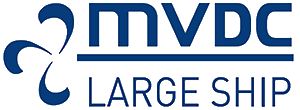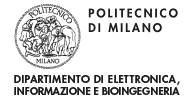Power Converters
The integrated power system of a ship with DC distribution requires the massive use of electronic power converters. For this reason power converters play a key role in MVDC research.
Power converters are necessary for:
- rectifying the AC voltage produced by alternators;
- connecting energy storage systems to the DC grid;
- supplying large-medium voltage users such as propulsion drives, bow thrusters and air conditioning compressors.

Test bench with reconfigurable multiphase two-pole synchronous machine prototype: a) machine coupled to a load; b) a terminal box where all stator coils are individually connected to an accessible lead for winding reconfiguration; b) internal view of the prototype showing connections between stator coils and terminal box leads.
The research outlined the need use different kinds of power converters, according to their use in the MVDC grid (generation and distribution).
In order to optimize and simplify the generation system, power converters belonging to these systems should be fitted with uncontrolled semiconductor devices (diode bridges). Since such converters cannot break fault currents, suitably-sized DC breakers have to be placed at their output terminals.
Simulations and experimental tests showed that, if a short circuit occurs downstream of the diode rectifiers, at their output terminals transient fault currents will occur with a damped oscillatory trend. As with AC systems, the first peak of these currents can reach amplitudes tens of times higher than steady state values.
As in AC power systems, in a MVDC grid it is also necessary to adapt voltage to the different levels of distribution. For this specific purpose, DC-DC converters called Solid State Transformers (SST) could be used, since they have the simultaneous ability to ensure the voltage adaptation and the required galvanic isolation. These converters also use controlled semiconductor devices; therefore it could be possible to limit and break fault currents, thus reducing DC breakers in the distribution grid. The SST would achieve galvanic isolation through a medium frequency transformer with much smaller dimensions than that usually employed in the common AC grids. The use of converters with a multi-phase structure would also improve the system’s reliability.

Short circuit current with machine rotor speed of 3000rpm (f=50Hz) for different values of DC voltage (Vdc = 100V – yellow curve, Vdc = 150V – green curve, Vdc = 250V – black curve, Vdc = 380V – blue curve, Vdc = 510V – red curve): a) simulation results, b) experimental results.
Technology for the realization of SSTs can be borrowed from a traction converter called PETT (Power Electronic Tranction Transformer), made up of a AC-DC power conversion system composed of several series-connected 1.2MW modules, each including a medium frequency transformer.
MVDC Large Ship – Sistema elettrico integrato con distribuzione in media tensione a corrente continua per grandi navi a propulsione elettrica, è un progetto cofinanziato dal POR FESR 2007-2013 Regione Friuli Venezia Giulia, Asse 1, Attività 1.1b.








